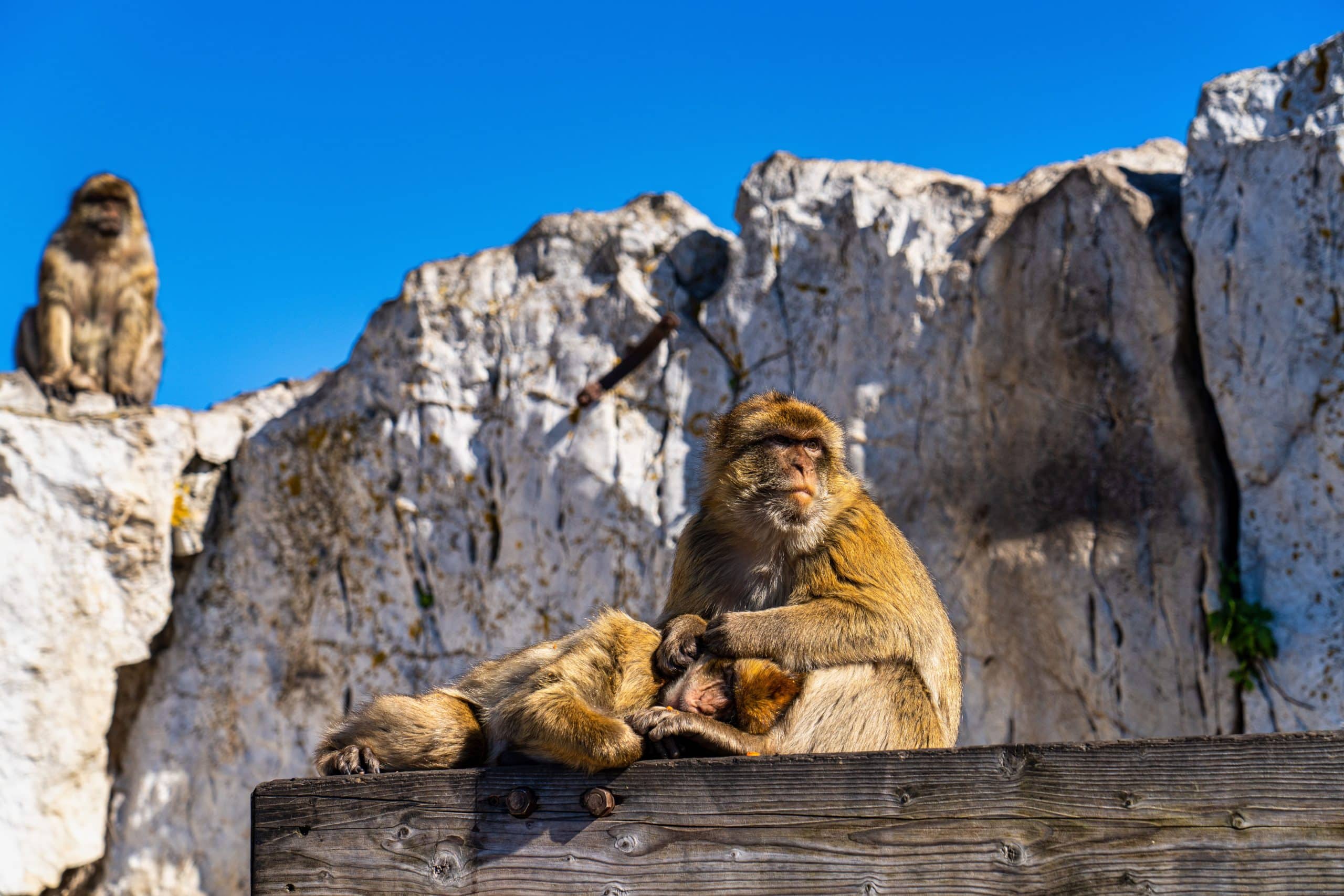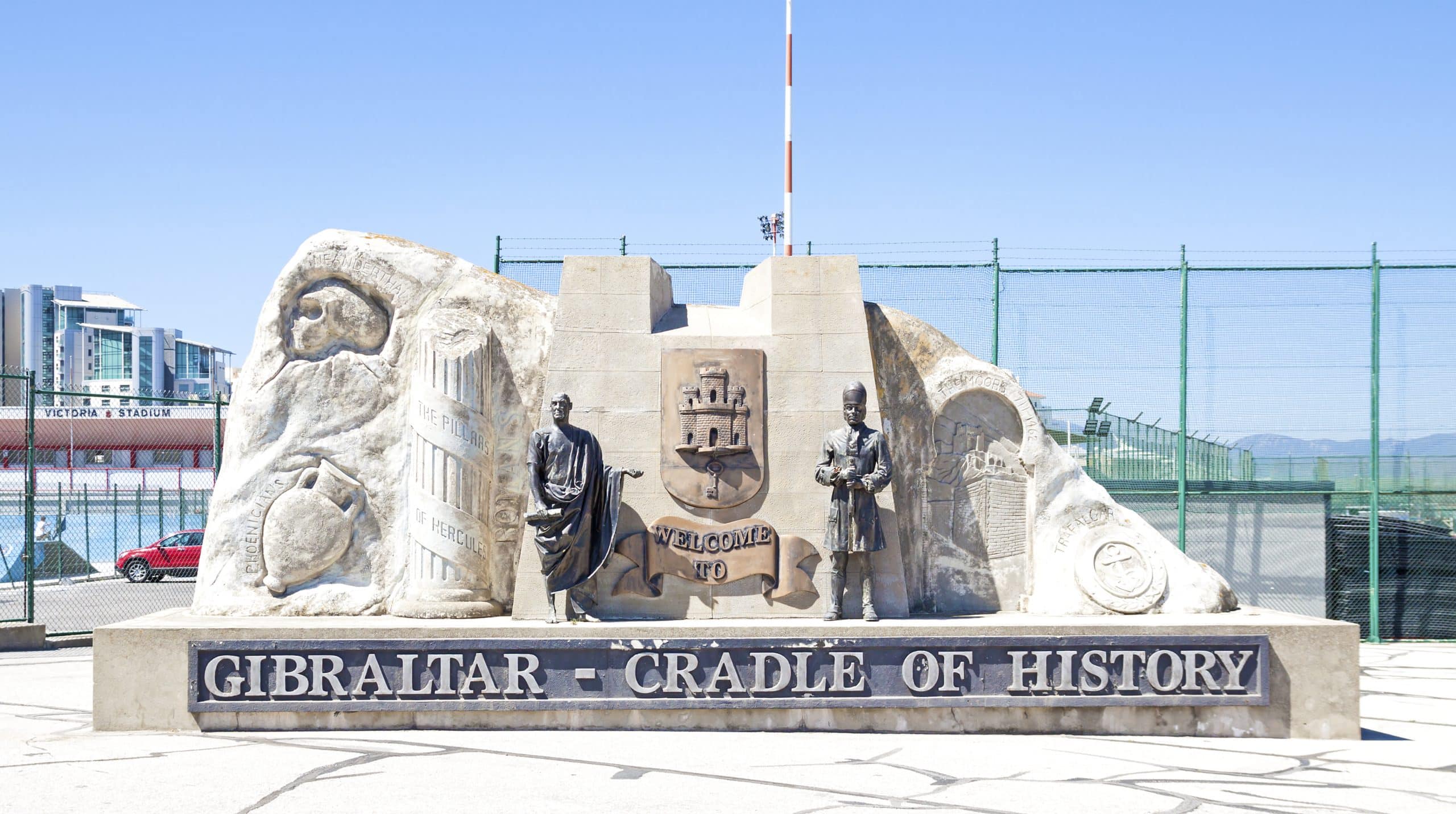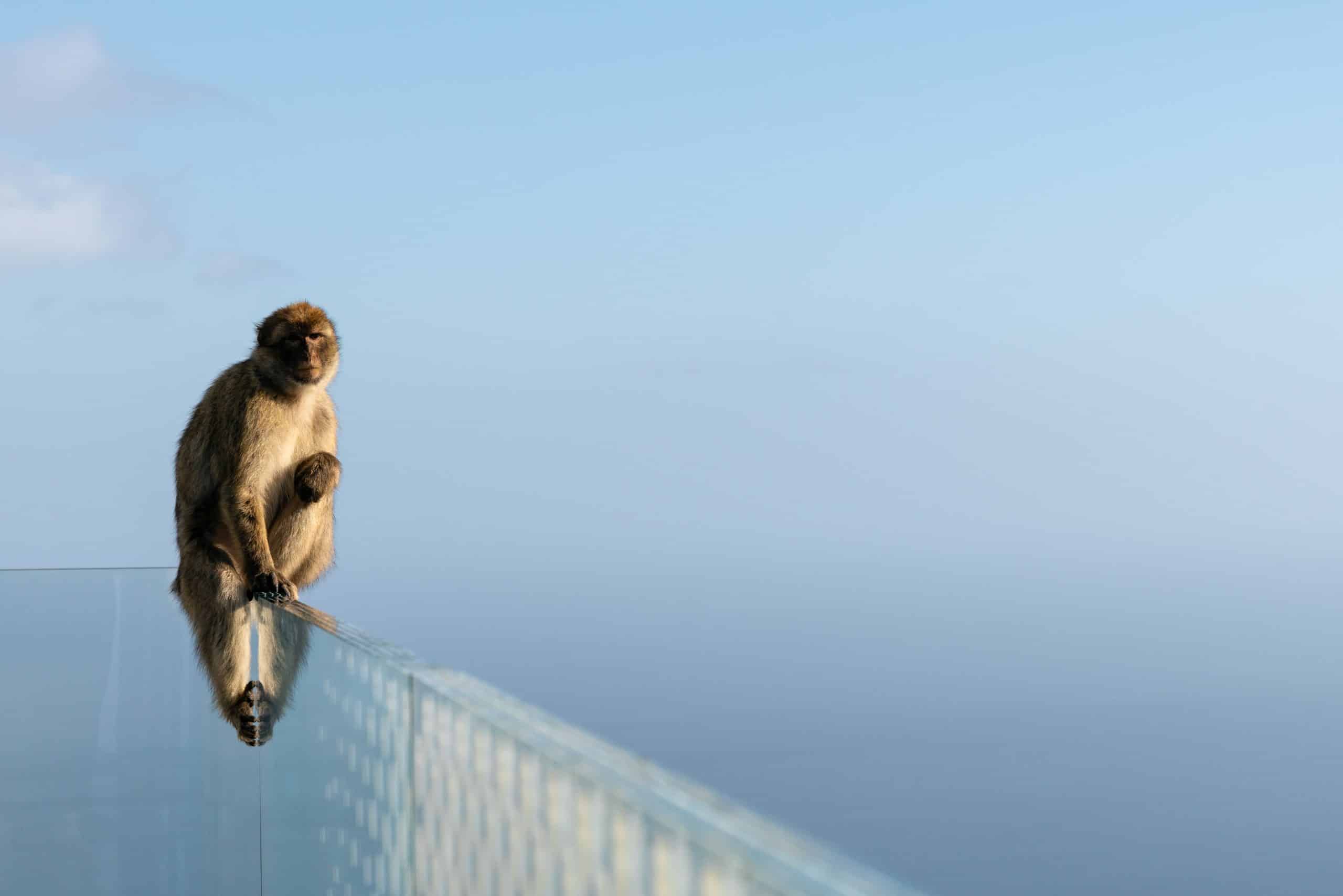
Monkeys of Gibraltar: Legends, History, and Where to Find Them
In this Article
Perched at the southern tip of the Iberian Peninsula, the Rock of Gibraltar is not just a strategic landmark but also home to a unique and enchanting population of monkeys. These aren’t just any monkeys; they are the famous Barbary macaques, the only wild monkey population in Europe. If you’ve ever been curious about the monkeys in Gibraltar, their history, and where you can meet them, you’re in for a treat.
The Historical Journey of Gibraltar’s Monkeys
The monkeys of Gibraltar, known scientifically as Barbary macaques, have a rich history that intertwines with the Rock’s own storied past. Originating from the Atlas Mountains of Morocco and Algeria, these macaques are believed to have arrived on the Rock of Gibraltar around the time of the Moors’ occupation in the Middle Ages.
One popular theory suggests that the monkeys were brought over by the Moors as pets or even as mystical symbols. Another theory posits that they made their way across the Strait of Gibraltar naturally, although this is less likely given the distance and treacherous waters. Regardless of how they arrived, these monkeys have been an integral part of Gibraltar’s ecosystem for centuries.
Legends and Myths Surrounding the Monkeys
The Gibraltar apes are not just animals; they are living legends. One of the most enduring myths is that as long as the monkeys remain on the Rock, Gibraltar will remain under British rule. This belief was so strong that during World War II, when the monkey population dwindled, British Prime Minister Winston Churchill ordered that more monkeys be brought over from Morocco to boost their numbers.
Another legend tells of a secret underground tunnel beneath the Strait of Gibraltar, linking the Rock to Africa. According to this myth, the monkeys use this passage to travel back and forth between the continents. While there’s no evidence to support this fanciful tale, it adds an air of mystery to these intriguing creatures.
Why Are They Called Barbary Monkeys?
The term “Barbary” refers to the Barbary Coast of North Africa, which encompasses modern-day Morocco, Algeria, Tunisia, and Libya. The Barbary macaques are native to this region, hence their name. Interestingly, despite being commonly called monkeys, they are actually tailless and more closely resemble apes, which explains why they are often referred to as Gibraltar apes.
Where to Find the Monkeys in Gibraltar
If you’re eager to meet these charismatic creatures, the Apes’ Den is the place to be. Located halfway up the Rock, the Apes’ Den is the most popular spot to observe the monkeys in their natural habitat. Here, you can watch them play, groom each other, and interact with visitors.
The Rock of Gibraltar monkeys are also commonly found around the Upper Rock Nature Reserve. Taking the cable car to the top not only offers stunning panoramic views but also increases your chances of encountering the monkeys.
While they are often referred to as monkeys in Spain, it’s important to note that Gibraltar is a British Overseas Territory. However, its location at the crossroads of Europe and Africa makes it a melting pot of cultures – and wildlife.
A Few Tips for Your Visit
- Respect Their Space: The Barbary macaques are wild animals. It’s crucial to respect their space and avoid feeding or touching them.
- Secure Your Belongings: These monkeys are notorious for their curiosity. Keep your bags zipped and your belongings close, as they might try to snatch loose items.
- Follow Guidelines: Always adhere to the guidelines provided by local authorities and tour guides to ensure both your safety and the well-being of the monkeys.
The Role of Conservation
The Barbary macaques are considered an endangered species. Conservation efforts are in place to protect their populations both in North Africa and Gibraltar. The Gibraltar Ornithological and Natural History Society (GONHS) monitors the monkey population on the Rock, ensuring they are healthy and thriving.
Experience the Monkeys with Rocky Monkey Tours
To truly appreciate the magic of the monkeys of Gibraltar, there’s no better way than joining a guided tour. Rocky Monkey offers three fantastic tour options, each including a visit to the famous Apes’ Den Gibraltar. Our local guides are passionate and knowledgeable, providing you with fascinating insights into the monkeys’ behaviour, history, and the legends that surround them.
Whether you’re an adventure seeker or a history enthusiast, our tours cater to all interests. You’ll not only get up close with the monkeys but also explore other iconic landmarks on the Rock.
Conclusion
The monkeys in Gibraltar are more than just a tourist attraction; they are a symbol of the Rock’s rich history and the enduring allure of this unique destination. From ancient legends to modern conservation efforts, the story of the Gibraltar apes is as captivating as the creatures themselves.
So why wait? Embark on an unforgettable journey with Rocky Monkey. Let our local guides lead you through the wonders of Gibraltar, ensuring you experience the very best the Rock has to offer – including an up-close encounter with its most famous residents. Book your tour today and be part of the legend!






